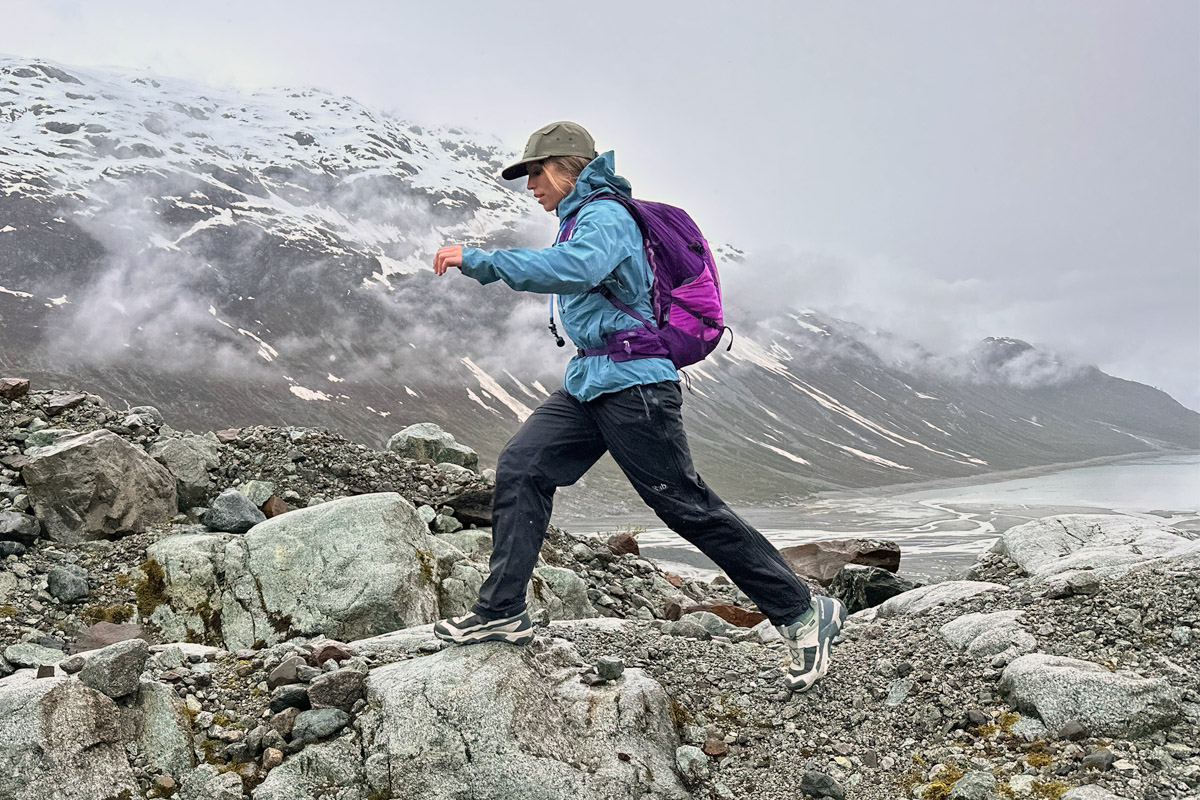
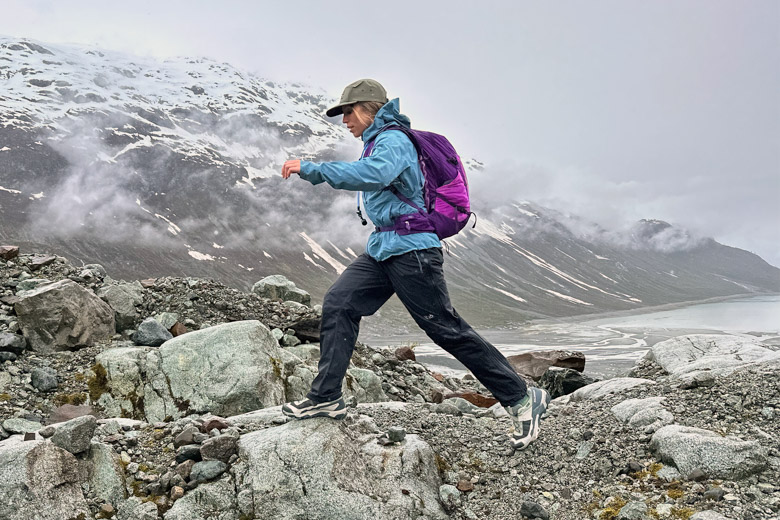
Price: $155
Weight: 1 lb. 11.2 oz.
Capacities: 17L, 23L
What we like: A lightweight, technically savvy daypack that breathes well and moves with you; comes with 2-liter HydraPak bladder.
What we don’t: Straps and buckles have a fairly flimsy feel; pocket layout could be improved.
See the Deuter Speed Lite Pro 23 SL Hydro See the Deuter Speed Lite Pro 25 Hydro
Deuter’s Speed Lite has been a mainstay in the daypack market for years, and the Pro variations add a technical slant to the popular design. Offered in several capacities, I tested the mid-range women’s Speed Lite Pro 23 SL Hydro on an eight-day trip to Alaska and came away very impressed. With pockets along the shoulder straps and a close, body-hugging fit, the pack is reminiscent of a running vest but with ample space to stash a day’s worth of essentials. Plus, it comes with a handy 2-liter HydraPak water bladder. The design does make some compromises to keep weight and bulk to a minimum, but overall, it’s a great companion for fast-paced day hikes, ridge scrambles, and other technical outings. Below are my thoughts on the Speed Lite Pro 23 SL Hydro. To see how it stacks up to the competition, check out our articles on the best daypacks, best women’s daypacks, and best hydration packs.
Editor’s note: We tested the Hydro version of the Speed Like Pro 23 SL for this review, but Deuter also offers a standard model at a lower cost without a water bladder.
With a secure, running vest-like fit and a good amount of cushioning along the straps, the Deuter Speed Lite Pro 23 SL Hydro is very comfortable for a fast-and-light design. My trip to Alaska included several off-trail hikes that lasted anywhere from a couple of hours to an entire day. At one point, the Speed Lite was filled to the brim with my camera, extra layers, a beanie, liner gloves, a satellite messenger, snacks, and about three liters of water. Totaled up, it was about 20 pounds worth of gear, which is just under Deuter’s recommended load limit of 22 pounds. Even when jogging down easy descents, the pack never felt overloaded or out of its element; it remained bounce-free and secure, moving with my body rather than as a separate unit.
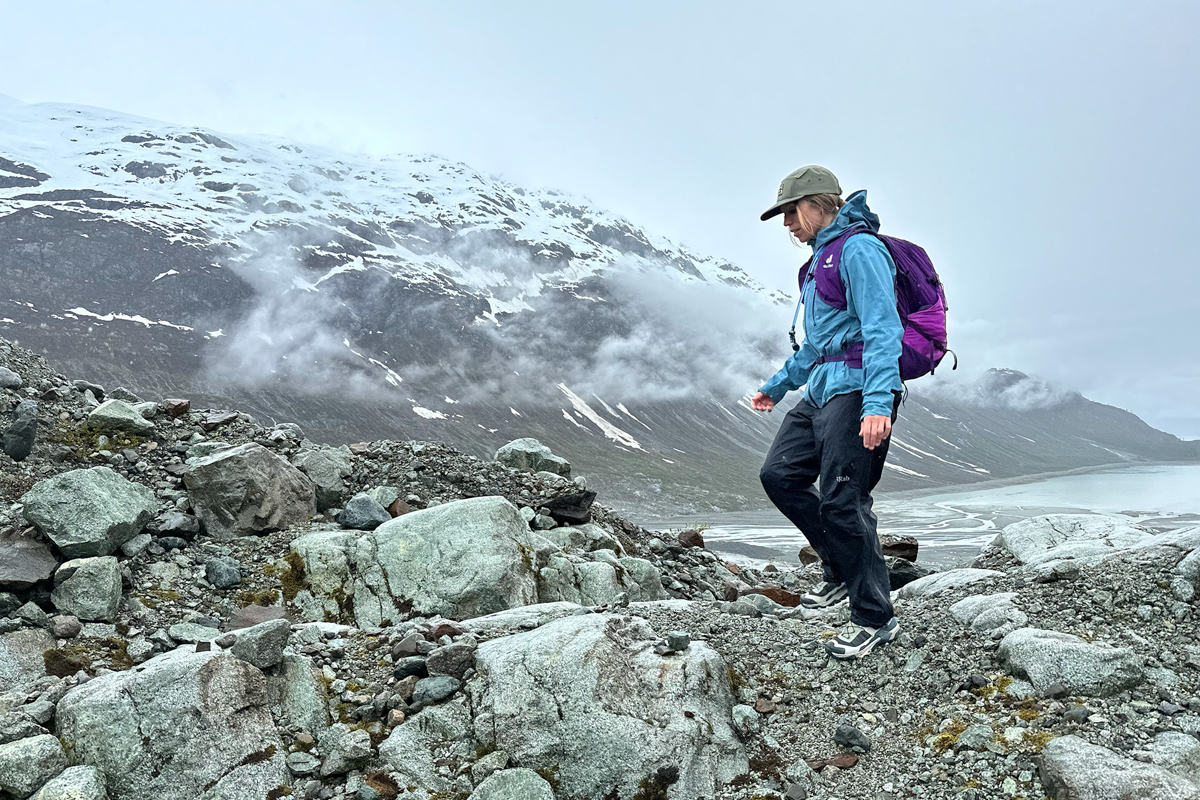
The Speed Lite Pro’s strap design makes it easy to dial in a close fit to maximize security. There are several points of adjustability, including the hipbelt, shoulder straps, and sternum strap, along with load lifter straps to help bring the weight closer to your back. Many streamlined packs opt to forgo load lifters, but I find them very helpful for proper weight distribution. I wouldn’t recommend overloading the pack due to its minimally padded hipbelt and lack of rigid frame, but the foam backpanel offers ample support and structure for light loads. In other words, the Speed Lite is very comfortable as long as you stay within its limits.

At 1 pound 11.2 ounces, the Speed Lite Pro 23 SL Hydro is competitively lightweight for a daypack of its capacity. For comparison, Osprey’s reservoir-equipped Skimmer 28 (the women’s counterpart to the men's Skarab) is heavier at 1 pounds 14.5 ounces, while their more technically savvy Tempest Velocity 20 (which also takes cues from running vests) checks in at 1 pound 13 ounces for the XS/S size. You can go even lighter with a streamlined option like the REI Co-op Flash 22 (14 oz.), but that pack is much more minimalist than the Speed Lite with limited storage, compromised carrying comfort, and more fragile fabrics and components. In my opinion, the Speed Lite strikes a really nice balance between weight and technical capabilities: The pack went unnoticed throughout long days of hiking without feeling out of its element when stuffed full of gear.

Deuter’s LiteAir backpanel does a great job keeping air moving. There are several cutouts in the foam, along with mesh covering the entire back for a breezy, well-ventilated experience on the trail. My trip to Alaska was very mild, with temperatures hovering in the 50s Fahrenheit, but I did have a chance to test the pack on a couple of warmer outings in the Lake Tahoe area. Despite working up a sweat on an exposed hike, I felt the pack did a great job of promoting airflow and minimizing moisture buildup. It’s true that some Osprey designs may be a little better at regulating temperature—including the AirScape backpanel on their Tempest packs—but overall, the Speed Lite strikes me as entirely serviceable in warm to hot weather.

I experienced some amount of rain every day in Alaska, from light drizzles to full-on downpours that lasted several hours. The Speed Lite Pro managed to keep my belongings protected throughout the trip, but it was clear that I was pushing the pack’s limits. On several occasions, the exterior was noticeably dark and dripping with moisture, leading to concerns about my camera and phone getting wet inside. Again, the interior managed to stay dry, but I would recommend bringing along a rain cover, dry bag, or pack liner to protect sensitive gear if rain is in the forecast. The durable water-repellent (DWR) coating can only handle so much moisture before getting overwhelmed.
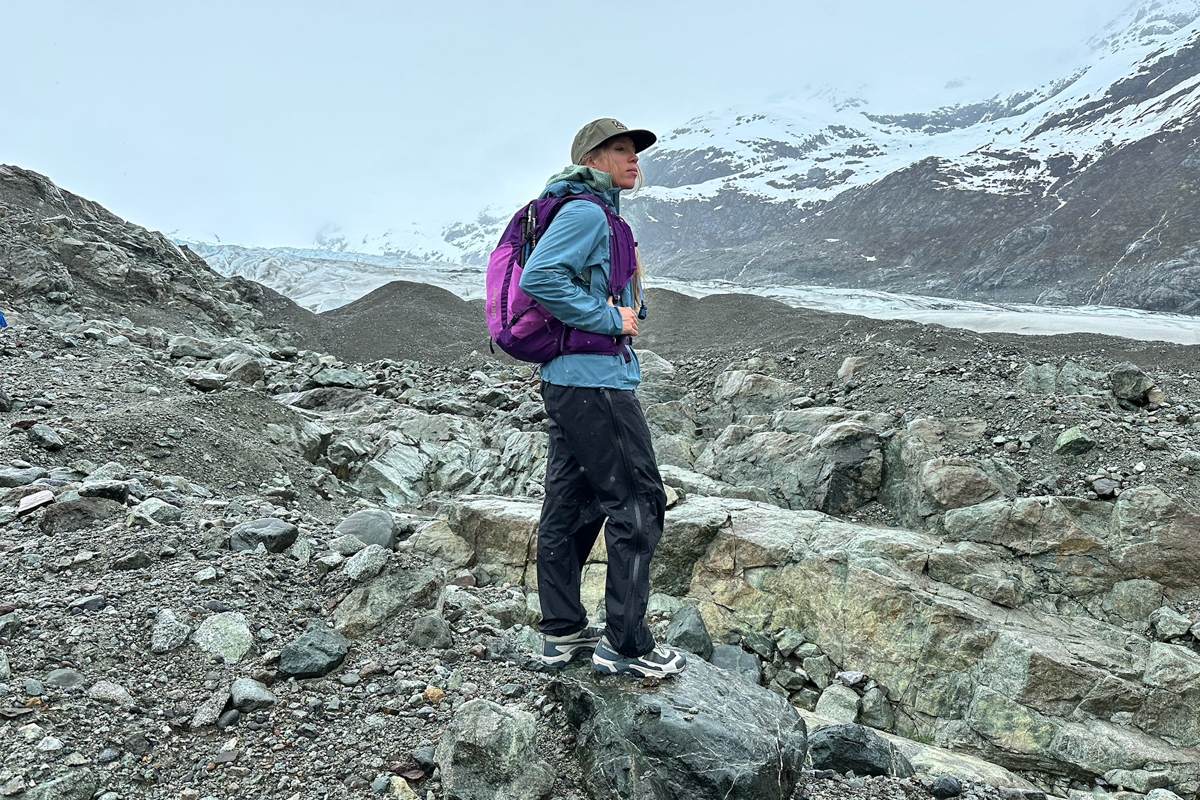
The pack I tested comes with a quality 2-liter HydraPak water bladder, which is a nice inclusion for those looking for an all-in-one purchase. The reservoir fits nicely into a dedicated sleeve along the backpanel and secures via an attachment loop. There’s a single exit port for the reservoir tube, along with an attachment point on the sternum strap to keep the tube out of the way while hiking. Overall, I found the system to be very user-friendly and convenient—and it’s even more enticing if you don’t already own a hydration reservoir.
Overall, I would categorize the Speed Lite Pro’s organization as solid with a couple of caveats. On the bright side, there are a lot of pockets to divvy up smaller items. Starting at the front, you get a zippered pocket at either shoulder strap: one with a horizontal opening and one that opens vertically. Both pockets can fit a smartphone, although the one with the horizontal opening is designed for a soft flask (sold separately). There are also dual hipbelt pockets, which is a rarity among lightweight designs, as well as a top zippered pocket, a mesh shove-it pocket for stashing an extra layer, and mesh water bottle pockets flanking the sides. I wish the hipbelt pockets and top pocket were a little bigger—the waist pockets can fit a small bar or a couple gels, while the top pocket swallowed my Garmin inReach Mini, a small tube of sunscreen, and lip balm with little room to spare.
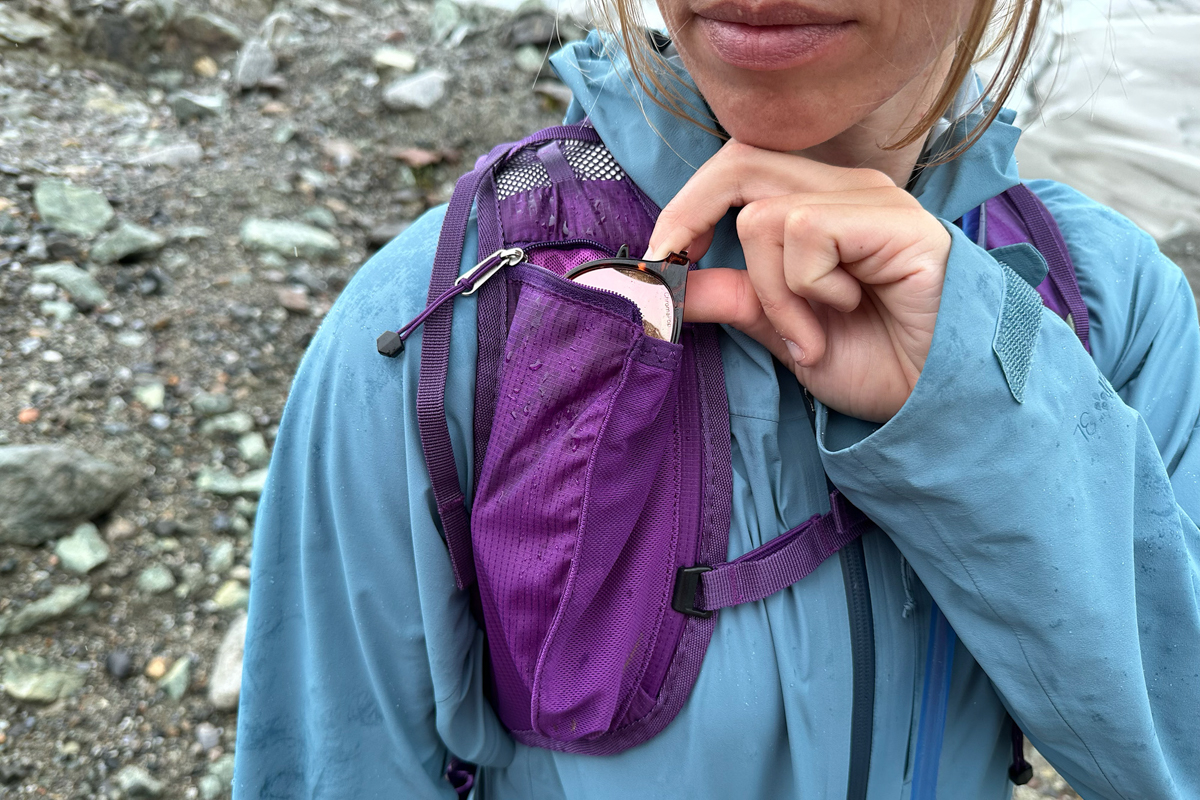
Inside the pack, there’s a sleeve and attachment loop for securing the 2-liter HydraPak reservoir. The main compartment itself is fairly slim, which made it hard to fit bulkier items like my camera, although Deuter did include several straps on the outside of the pack that can be expanded or cinched to accommodate loads of various sizes. Rounding out the design are attachment points for trekking poles or an ice axe, a key clip inside the top pocket, and the option to secure a helmet via Deuter’s mesh helmet holder (sold separately).
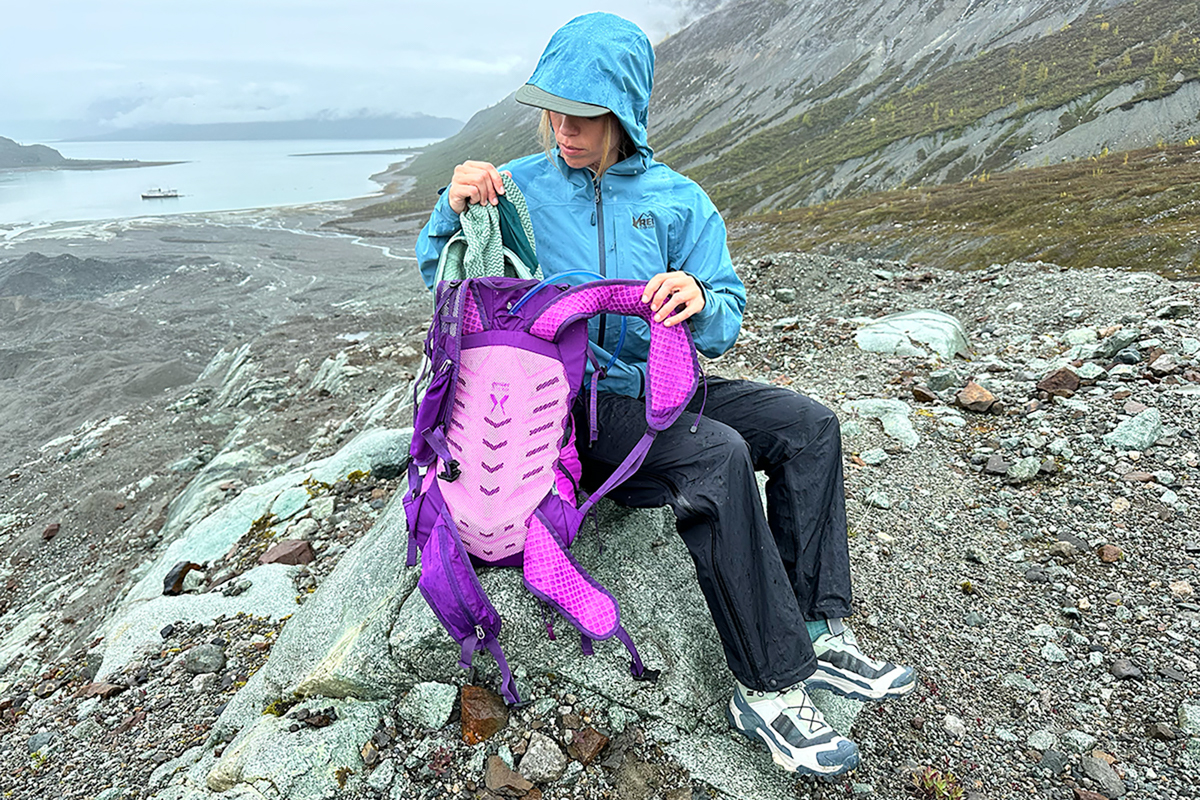
Lightweight gear often sacrifices some durability to keep weight and bulk to a minimum, and the Deuter Speed Lite Pro 23 SL Hydro is no exception. To be fair, the pack has held up very well thus far with no obvious signs of wear, but the relatively thin materials and fragile-feeling components give me pause about long-term durability. Specifically, the straps are pretty thin, the buckles are small, and the exterior doesn’t inspire a ton of confidence when bushwhacking or brushing up against sharp rocks. In terms of fabric thickness, the pack uses a mix of 100-denier (D) and 120D ripstop polyamide, which I found to be surprisingly abrasion-resistant despite being on the thinner end. There’s also a good amount of exposed mesh at the front and sides, which may be susceptible to snags and tears. As with any pack, treating the Speed Lite nicely will help maximize its lifespan, but those who are hard on their gear may want to consider a beefier—albeit heavier—design like the REI Trail 25, which uses 210D ripstop nylon.
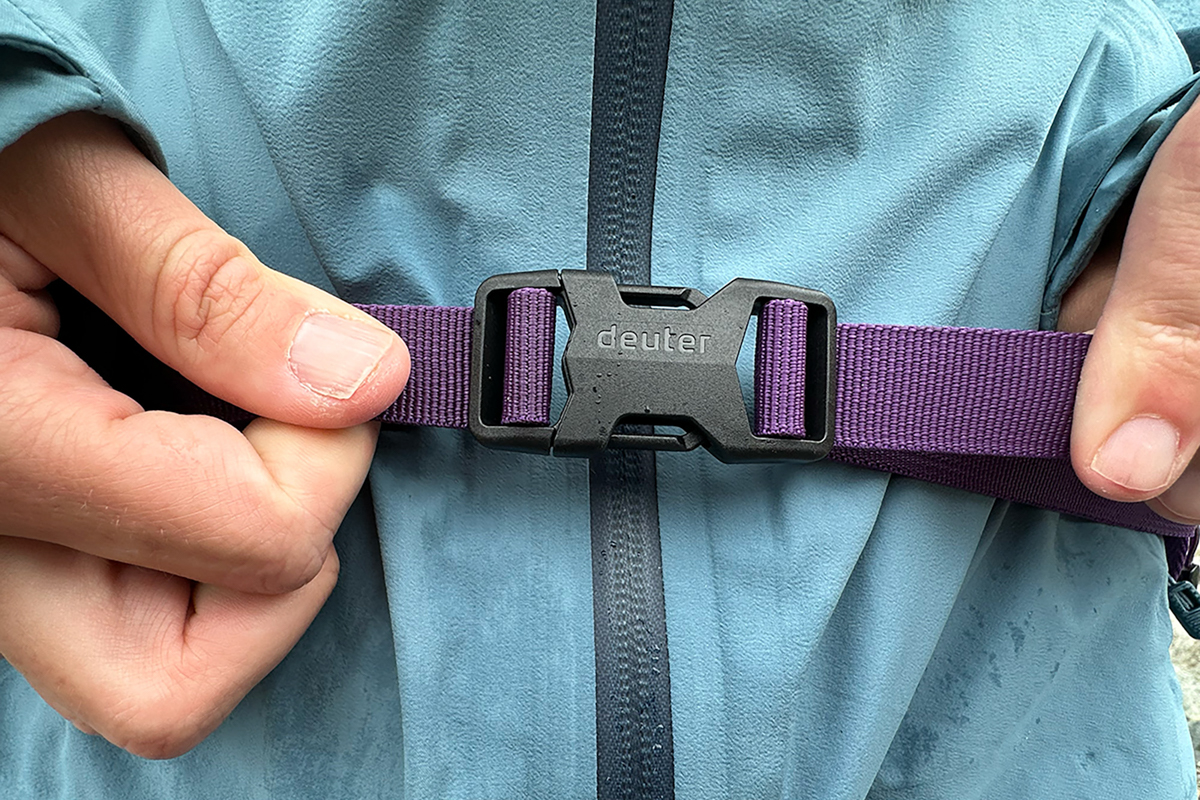
The Speed Lite Pro 23 SL is offered in a single size, which Deuter lists as compatible with back lengths between 15 and 19 inches. I’m smack-dab in the middle at 17 inches and was able to achieve a very comfortable and secure fit. Between the shoulder straps, hipbelt, and sternum strap, there are a good number of options for dialing things in, and the load lifters help bring the weight closer to your back (many minimalist packs omit this feature). That said, if you’re worried about exceeding the back length range, it could be worth considering the non-SL version of the pack, which fits backs between 17 and 21 inches. For a detailed breakdown on how to calculate this number, Deuter has a nice how-to guide here.
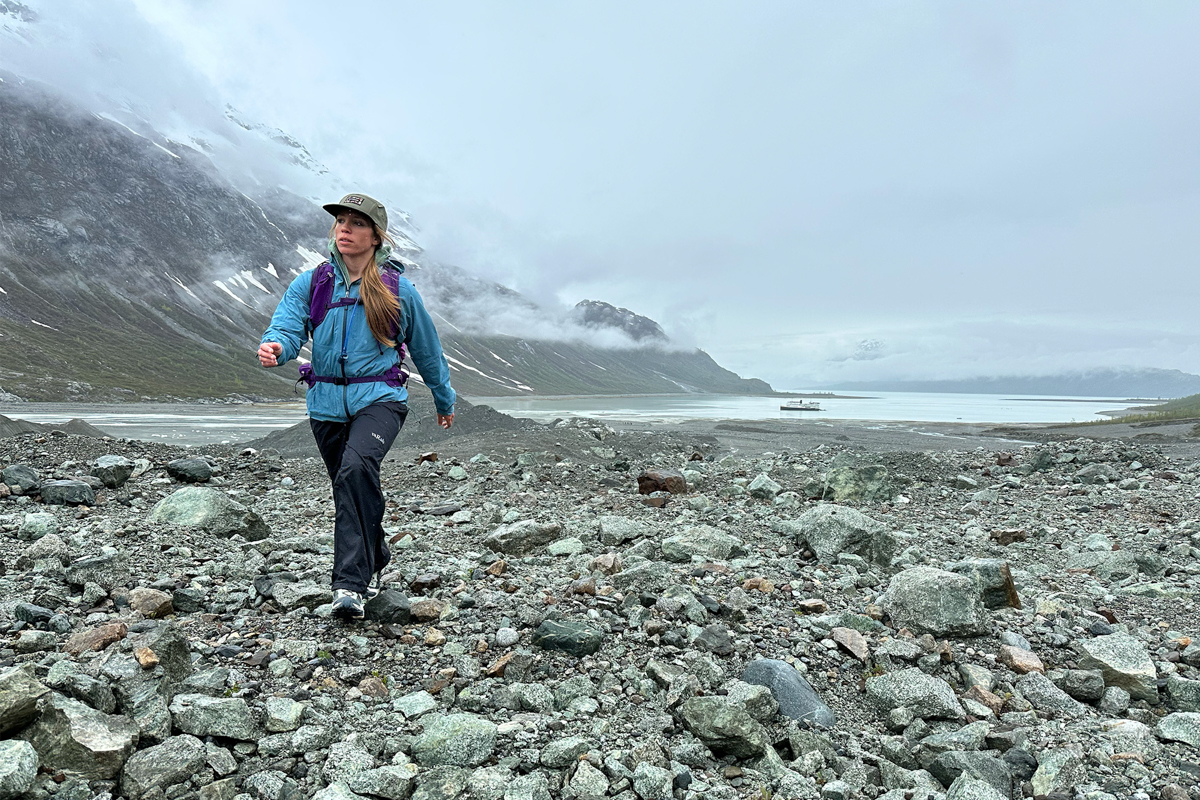
Deuter has made notable inroads on the sustainability front in recent years, and the Speed Lite Pro is a nice reflection of their progress. In addition to using a PFAS-free DWR coating that forgoes the use of added harmful “forever chemicals,” the pack is made with recycled body fabrics. It’s also certified to several hard-to-meet standards, including Green Button, ClimatePartner, and bluesign. The Green Button label means the pack meets strict social and environmental criteria, while the ClimatePartner designation indicates Deuter is committed to offsetting “all unavoidable CO2 emissions.” Finally, as a bluesign product, the Speed Lite is built with a focus on minimizing impact on people and the environment. Added up, it’s another commendable effort from Deuter that only adds to the pack’s all-around appeal.
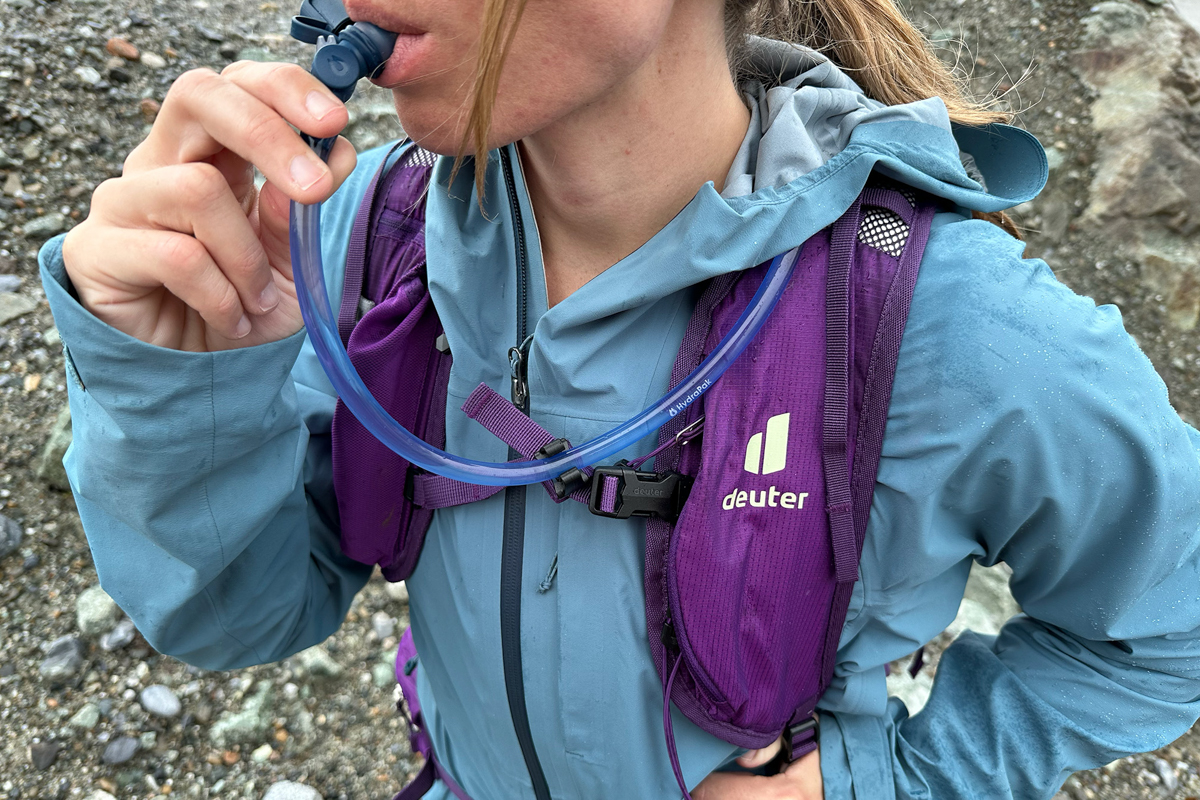
I tested the Speed Lite Pro 23 SL Hydro for this review, and the women’s-specific SL lineup also includes a 17-liter capacity. On the men’s side, there are Pro Hydro variations available in 19 and 25-liter options. If you already own a hydration reservoir or prefer a backpack without one, Deuter has standard versions in both men’s and women’s fits that cost a bit less. Finally, Deuter offers the flagship Speed Lite pack (no “Pro”) in capacities ranging from 13 to 21 liters. The Speed Lite is a unisex pack that’s less technically savvy than the Pro but a nice alternative for those looking for a more traditional daypack.
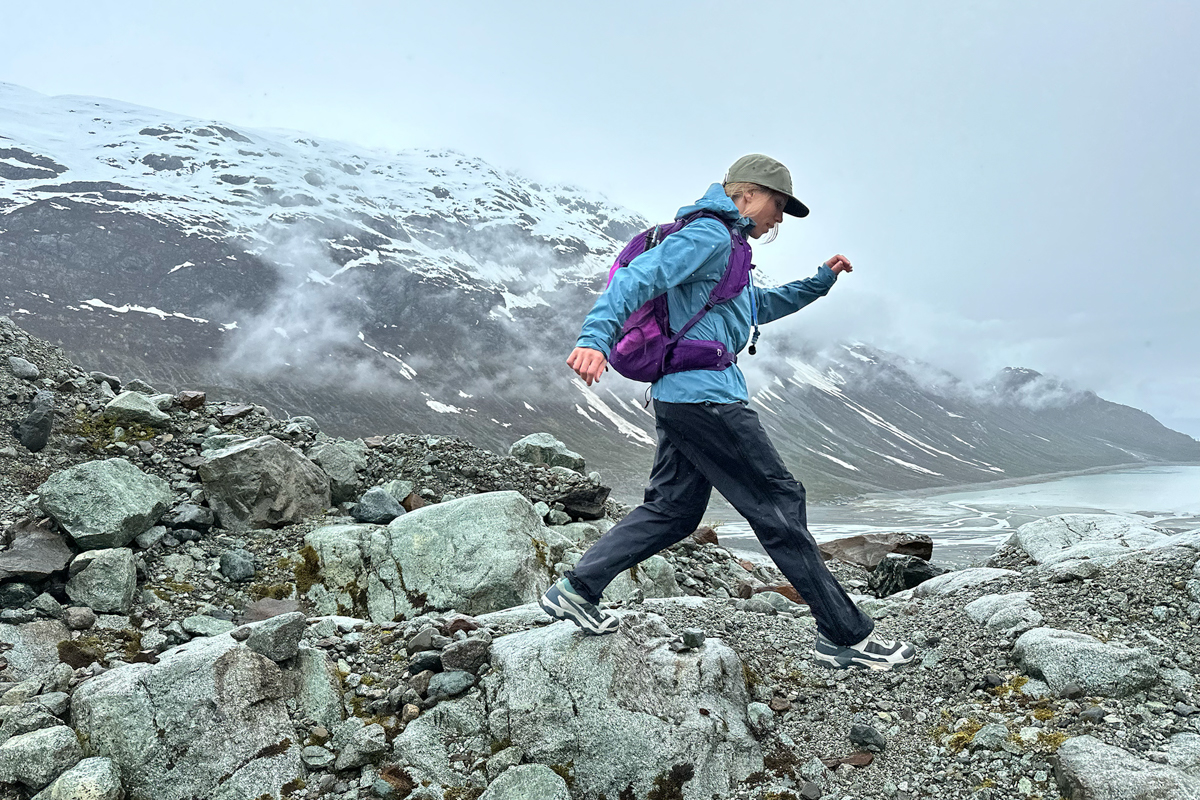
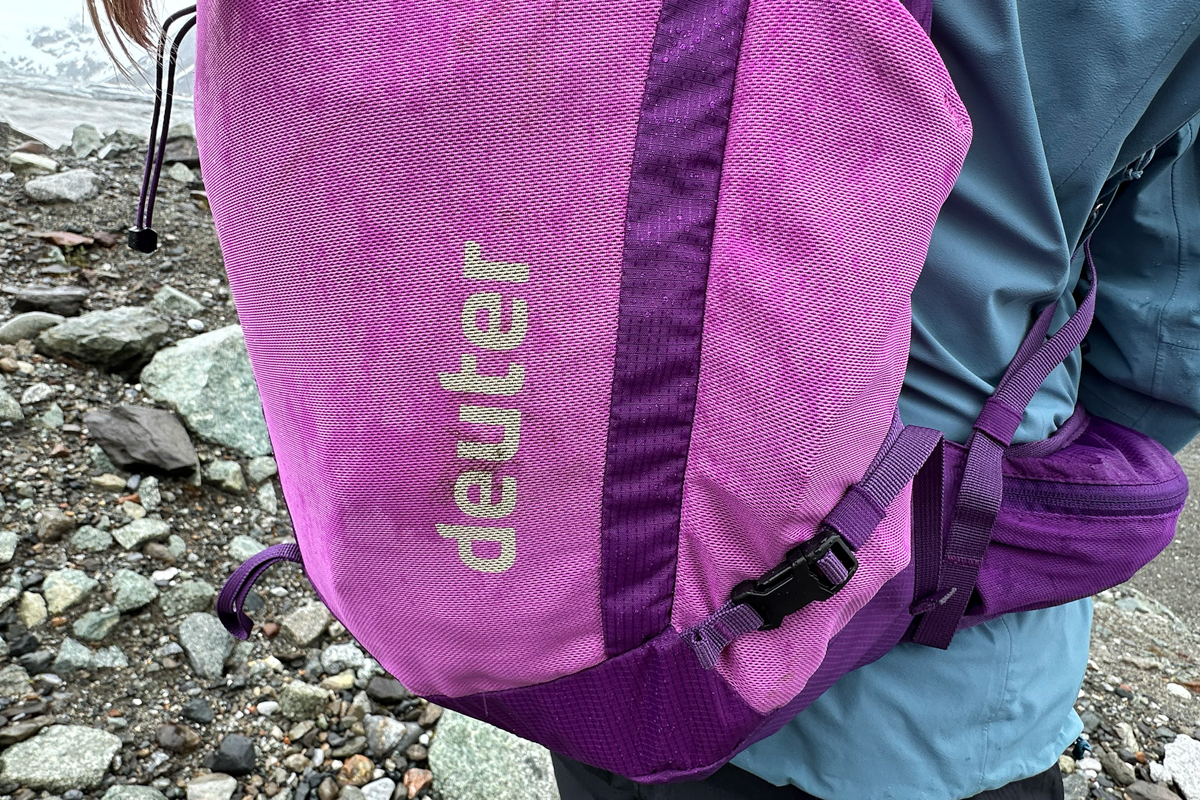
| Daypack | Price | Weight | Hipbelt | Pockets | Reservoir |
|---|---|---|---|---|---|
| Deuter Speed Lite Pro 23 SL Hydro | $155 | 1 lb. 11.2 oz. | Cushioned | 8 exterior | 2L HydraPak |
| Black Diamond Distance 22 | $220 | 14.5 oz. | None | 7 exterior | None |
| Osprey Tempest Velocity 20 | $180 | 1 lb. 13.0 oz. | Cushioned | 10 exterior | None |
| Arc’teryx Aerios 18 | $180 | 1 lb. 4.0 oz. | Webbing | 4 exterior | None |
| Osprey Skimmer 28 | $150 | 1 lb. 14.5 oz. | Cushioned | 4 exterior | 2.5L Hydraulics |
The Speed Lite 23 Pro SL is a great option for hikers who prioritize easy on-the-go access and a close fit, but mountain runners may want to consider an even lighter design like the Black Diamond Distance 22. For around 8 ounces less than the Speed Lite Pro, the Distance features more functional vest storage that can accommodate two soft flasks plus a phone, snacks, and other small essentials you want to keep close at hand. It’s also sold in three sizes that can accommodate torsos from 23.5 to 39.5 inches in length. That said, the lack of hipbelt means you’ll want to be careful not to overload the Distance, and it’s a much steeper investment. In the end, there’s no denying that the Distance is a standout technical companion, but the Speed Lite is a softer landing for most hikers.
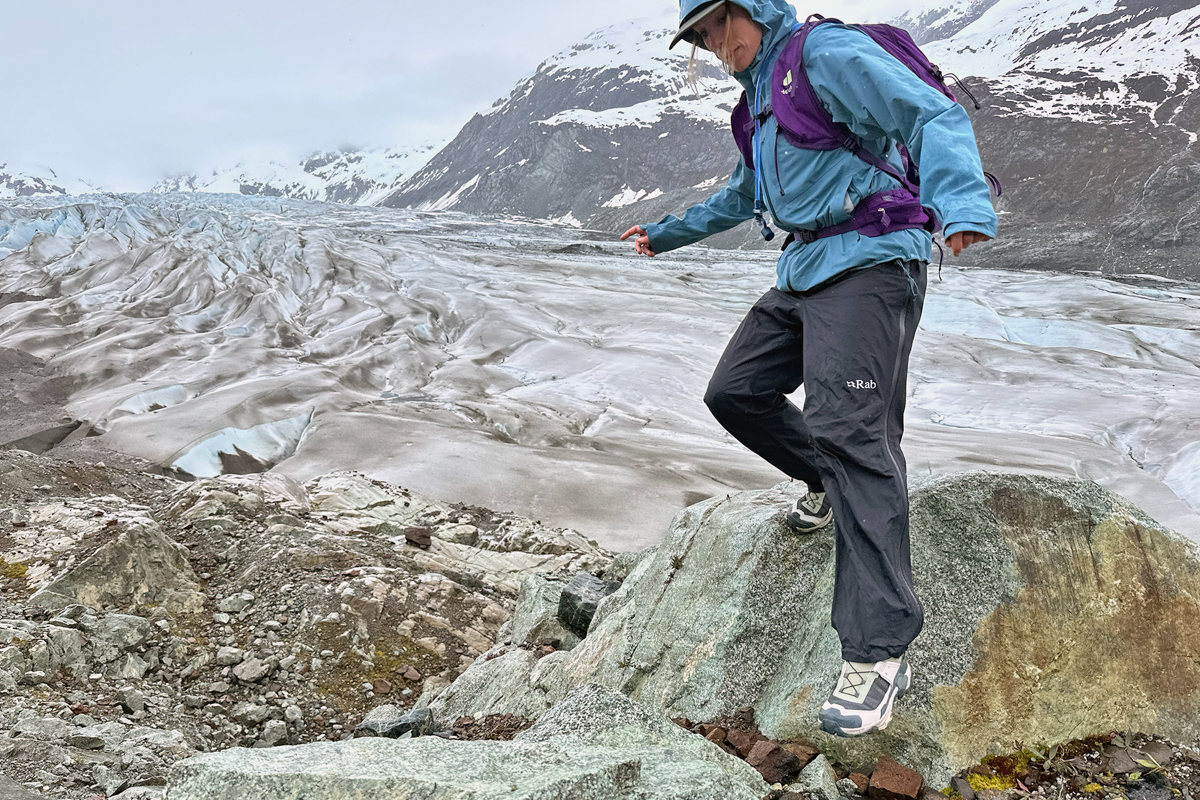
Running vest-inspired storage is becoming more popular in the daypack market, and two other designs that feature shoulder strap pockets are the Osprey Tempest Velocity 20 and Arc’teryx Aerios 18. Both packs cost $180 and come with some advantages over the Speed Lite Pro. While heavier at 1 pound 13 ounces for the XS/S size, the Tempest Velocity boasts thicker fabrics and a more breathable AirScape backpanel. It’s also available in two sizes and features larger hipbelt pockets, as well as more generous front storage (four total pockets along the shoulder straps). Alternatively, the Aerios 18 is lighter than the Speed Lite Pro at 1 pound 4 ounces, although it’s only available in a single unisex size and swaps in a basic webbing hipbelt that’s less supportive than the Deuter’s lightly cushioned waist belt.
If you’re looking specifically for a daypack with a hydration bladder, Osprey’s Skimmer 28 (and men’s Skarab 30) is worth considering. For $5 less than the Speed Lite Pro Hydro, the Skimmer 28 boasts a larger capacity and larger hydration bladder (2.5L), as well as all of the trimmings we look for in a quality daypack: a low-profile and comfortable suspension system, a cushioned hipbelt, and plenty of on-the-go storage. That said, it doesn’t have the same technical appeal as the Speed Lite Pro. It has an ice axe loop and daisy chain attachment points along the front panel, but it’s limited to 4 exterior pockets and weighs just over 2 pounds. For those reasons, we think the Speed Lite Pro is the clearer choice for more intensive outings.
Back to the Deuter Speed Lite Pro 23 SL Review See our Women's Daypack Guide